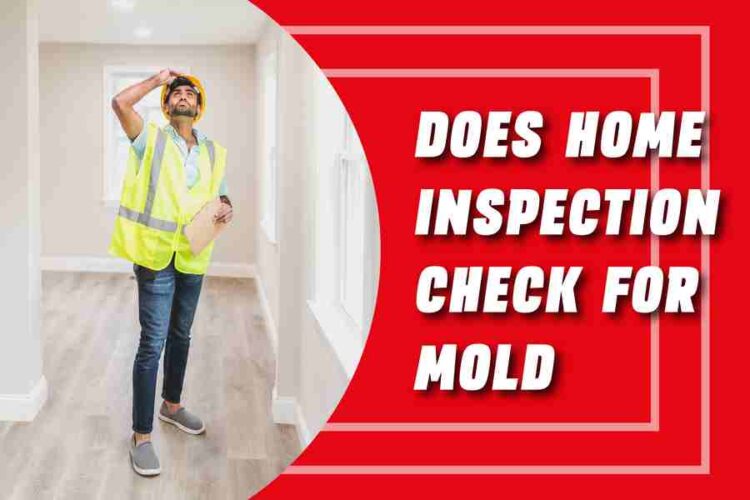When buying a home, the inspection process can feel overwhelming. There are so many details to consider, from the small (like whether there is an oven in the kitchen) to the big (like whether there are signs of previous water damage). So what about mold? Does a home inspection for new homes check for mold? What does a home inspector look for when it comes to mold in new construction? Keep reading for more information. Readers Asked: Is it important to know what’s behind the walls during Home Inspection? Does home inspection check for Mold? If you have been looking at homes to buy or thinking about buying a home, you may be asking yourself these questions. The answer is YES! Both are very important and here’s why
Does Home Inspection Check For Mold?
During a home inspection, a qualified inspector will check for signs of mold growth throughout the property using specialized equipment and tools. If the inspector detects signs of mold growth, they will usually advise the buyer on how to proceed with the removal and/or containment of the affected area. The presence of mold can cause significant health problems for homeowners, so it is important to remove as much of it as possible before purchasing a property.
Why Knowing the Condition of the Walls is Important?
1. Knowing the Condition of Your Walls is Important for Safety
If there are signs of moisture damage to your walls, it could be an indicator of a leak. Moisture damage to walls can lead to bigger issues, like mold, which can be deadly to small children and the elderly. You don’t want to take a chance at a potential health hazard in your home. Deterioration of the structure of the walls could lead to a dangerous situation as well. If your walls are damaged, a strong gust of wind could make the problem much worse. You want to be safe in your home, so knowing the condition of your walls is important for safety.
2. Knowing the Condition of Your Walls is Important When Selling a Home
Inspecting your walls and addressing any problems you find before putting your home on the market is important. If you don’t, a potential buyer may make a lowball offer, assuming you’ll have to foot the bill for repairs. That could put you in a sticky situation. It could also significantly reduce your profit from the sale. If you have visible issues, like water damage, peeling paint, or cracks, you’ll have to explain the problem to a potential buyer. A buyer might decide to walk away from the sale, or they might demand a lower price. Knowing the condition of your walls before putting your home on the market is important for sales.
3. Knowing the Condition of Your Walls is Important for Detecting Problems
Wall inspection can help you identify problems before they become major issues. For example, cracks in the walls could be caused by a settling foundation or shifting soil. Alternatively, they could be caused by a plumbing issue or a foundation/roof issue that has yet to be discovered. Wall cracks could also be caused by temperature extremes, which could indicate improper insulation. Wall scuffs could be a sign of a pest infestation, or they could be caused by small children or pets. You can’t tell until you’ve had your walls inspected, so knowing their condition is important for identifying potential problems.
4. Knowing the Condition of Your Walls Is Important When Maintaining a Home
Maintaining your home is a big job, but it’s important. A thorough inspection of your walls can help you identify potential issues, like water damage and pests, before they become a bigger problem. Identifying and addressing these issues early can save you thousands of dollars in repairs. The sooner you identify the problem, the better. You’ll have time to plan for the repairs, get bids from contractors, and have the repairs done in a timely manner. You don’t want a health or safety issue to linger, so knowing the condition of your walls is important when maintaining a home.
5. Knowing the Condition of Your Walls Is Important to Find Hidden Issues
Wall inspection can also help identify hidden issues such as rot or termites. These are destructive problems that can cause extensive damage if not caught early enough. Spotting these issues before they become more costly problems can save you thousands of dollars in repairs. Knowing the condition of your walls before making an offer on a home can help you decide if the home is a good fit for you. If you have an inspection done, you’ll know what you’re buying. You’ll see the potential issues and be able to negotiate a better price on the home. Knowing the condition of your walls before moving into a home is important to find hidden issues.
Is There Mold Behind The Walls?
- If there is visible mold, the inspector will typically take a sample to test and see what type of mold it is. There are many different types of mold, and some types are more harmful than others. In some cases, the inspector may be able to tell you what type of mold is behind the walls, but it may depend on the type of mold they are dealing with.
- In other cases, the inspector may be able to identify signs of water damage but not be able to determine if there is mold.
- If you have a sample of the mold and want to know what type it is, you can take it to your local home improvement store and they will be able to identify the type of mold for you. Be sure to keep the sample in a sealable bag or container so it does not spread throughout your house.
What To Do If You Find Mold During Your Inspection?
- If your home inspector finds mold behind the walls, they may still be able to repair it for you. They may recommend that you hire a professional mold removal company to remove the mold, and then have them come back to make sure the problem has been fixed. When hiring a professional for mold removal, it is important to make sure they are licensed and insured. You can also hire a professional yourself if you would rather do it yourself. If you find mold on your own, wear protective clothing and breathing gear when removing it from behind the walls. Be sure not to touch any of the molds with your bare hands, as this could spread throughout your house and cause more problems than you started with!
- I hope this article helped you understand what types of inspectors are looking for when inspecting homes. If there is water damage or signs of moisture behind a wall, there is a good chance there is mold present as well. You can hire a mold removal company to come in and clean it up for you, or you can do it yourself. If you are doing it yourself, be sure to wear protective gear, and use the proper tools to remove the mold without spreading it around your home.
- If you find mold during your home inspection, it is a good idea to have the mold tested to find out what type it is and how harmful it is. This will help you determine the best way to deal with the issue. You may be able to remove the mold yourself, but you may also need to hire a professional to remove the mold and do any necessary repairs. In some cases, you may have to get rid of the walls behind the moldy area, which can be costly. If you find mold during your home inspection, it is a good idea to let your realtor or builder know so they can have the mold tested and can figure out the best way to deal with the issue.
Bottom Line
In summary, a home inspection for new homes checks for mold. The answer is YES! If you are buying a new home, you should ask the builder to do a mold test. If you are buying an existing home, you should check for signs of water damage and mold behind the walls. It is important to know what’s behind the walls so you can fix any problems and make sure your home is healthy for you and your family.










